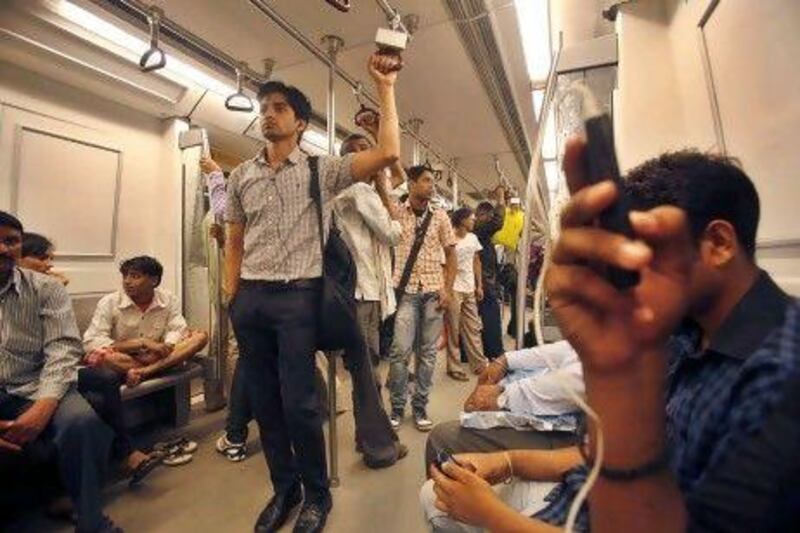NEW DELHI // Factories and workshops across India were up and running again yesterday after the major electrical grid collapses that caused the world's two worst power blackouts.
An estimated 620 million people lost their state-provided electricity when India's northern, eastern and north-eastern grids failed on Tuesday afternoon. It followed a failure of the northern grid on Monday that left 370 million people without power.
Veerappa Moily, who took over as India's power minister on Tuesday, said that by yesterday morning, power had been fully restored across the country and an investigation had begun into the cause of the blackouts.
"At this point of time, we don't want or start any blame game on any state, either on overloading or whatever it is," he added.
On Tuesday, Mr Moily's predecessor, Sushilkumar Shinde, accused the Indian states of Uttar Pradesh, Haryana and Punjab of drawing more than their share of power.
"States have been repeatedly informed not to take more power than their quota, and it is their ignoring of such requests that has brought on this crisis," he said.
However, some analysts have dismissed that explanation, suggesting that if it was the cause, similar blackouts would happen all the time.
The governments of Uttar Pradesh, Haryana and Punjab also denied the claims.
A Punjab government spokesman described the accusation as "absurd, factually baseless and grossly misleading" as he released figures that indicated Punjab had not exceeded its share.
Haryana's chief minister, Bhupinder Singh Hooda, blamed the blackout on a "snag in the northern grid".
When the first blackout occurred on Monday, news channels in India reported that the source of the problem was a failure in the grid near Agra, in Uttar Pradesh, the country's largest state.
"Uttar Pradesh has no role in the grid failure," said the state's chief minister, Akhilesh Yadav, during a press conference in Lucknow yesterday. "My state is not drawing more electricity than its allotted quota."
However, Mr Moily warned states to stick to a disciplined withdrawal of power from the grid. "If they overdraw, this is the result. They can see for themselves. The entire grid will go black."
Ram Naik, the chairman of the Power Grid Corporation of India, the country's state-owned energy utility, also issued a warning to the states calling for "grid discipline".
The Confederation of Indian Industry said yesterday that the two outages had cost businesses hundreds of millions of dollars, although they did not affect the financial centre of Mumbai and the global outsourcing powerhouses of Bangalore and Hyderabad in the south.
The group demanded reform of India's power sector, which has been unable to keep up with the soaring demand for electricity.
The power minister cautioned that there was no quick solution to the power crisis but added that the government was looking at immediate and longer-term measures to address power scarcity.
India has increased its power capacity by about 35 per cent during the past five years but is still only about one fifth of China's capacity, even though the two countries have similarly sized populations.
As a result, even though one third of Indians are not even connected to the power grid, there is a gap between supply and demand, with the peak-hour deficit reaching about 10 per cent.
Also, while generation capacity has increased, renovation of the transmission network has not kept pace, which means that about a third of the electricity produced is lost at this stage.
"A lot of the transmission network is not old," said Kameswara Rao, the leader for power and mining at Price Waterhouse Coopers India. "We are running but the treadmill is even faster."
Perhaps the biggest challenge, though, is the health of decrepit distribution companies that depend on subsidies and face huge losses from low tariffs and rampant power theft.
Together, they are now saddled with debt worth about US$35 billion (Dh128bn) and are increasingly unable to pay for new supplies.
[ sbhattacharya@thenational.ae ]
* With additional reporting by Reuters, Associated Press and IANS
Follow
The National
on
[ @TheNationalUAE ]
& Surya Bhattacharya on
[ @SuryatapaB ]





